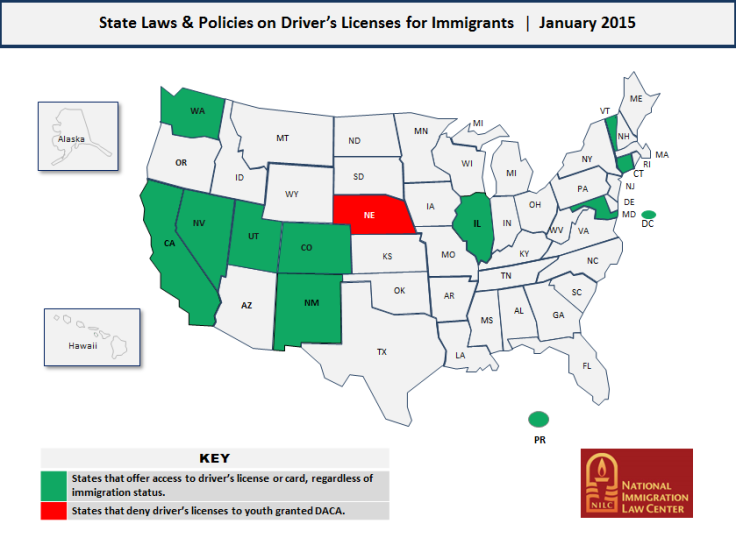
Santa Fe -- New Mexico’s capital building is as unique as it’s pro-immigrant policies. Called the “Roundhouse,” the circular structure is four stories high. It sports a flat skylight instead of a dome. Its four entrances welcome the Anglos, Mexicans, American Indians, and Spanish people that forged the state’s history. Diversity has been the cornerstone of the state’s policies, and it’s made it one of the most welcoming places for undocumented immigrants. Ninety percent of the state's undocumented are of Mexican descent. Many of them live in mixed families that include citizens and authorized immigrants.
Unlike undocumented immigrants in most other states, New Mexico residents can legally drive. In 2003, New Mexico was the first state in the nation to allow undocumented immigrants to secure driver’s licenses. The law was credited for reducing the rates of uninsured motorists from 33% to around 9%. (Why is the right to drive so important for immigrants and their neighbors? When you can’t have a driver’s license, you can’t have insurance. When you can’t have insurance, it’s harder to compensate fellow motorists if you’re at fault in a wreck). New Mexico also grants Spanish special status, and is home to a number of immigrant-friendly municipalities. In Santa Fe, the capital city, employers are not allowed to ask for Social Security Numbers to determine employment eligibility, and law enforcement are not allowed to expend resources to enforce civil immigration law.
Yet for undocumented immigrants in New Mexico, there’s trouble. On Monday, hundreds of immigrants and their supporters rallied outside of the Roundhouse. They protested Governor Susana Martinez’s support for a bill that would repeal the 2003 driver’s license law. Martinez is America’s first Latina Governor and a descendent of Mexican immigrants. She’s also a Republican, and has long opposed providing driver’s licenses for undocumented immigrants.
Latino activists decried what they they see as a betrayal. They chanted slogans in a mix of Spanish and English.
“Susana, que pasa, you turned your back on su propia raza.” (“Susana, what happened? You turned your back on your own people”).
Though a repeal has been proposed every year that she’s been in office, this year is different for New Mexico. Republicans have the majority in the state house for the first time in years. Other states have changed since 2003, pursuing both pro and anti-immigrant legislation.
Arizona’s Governor, Jan Brewer, also tried to bar undocumented immigrants from receiving driver’s licenses, including those granted deferred action by the Obama administration. Yet Brewer was overruled by a district judge. New Mexico's activists, referencing Arizona’s anti-immigrant stance, chided Susana in another chant.
“Susana, reacciona, no estás en Arizona.” (“Susana, react, you’re not in Arizona.”)
Nine states have passed pro-immigrant driving laws since 2003. This January, California unveiled a two-tier system that allows undocumented immigrants to drive. In Colorado, undocumented immigrants are technically allowed to get driver’s licenses. However, Republicans in the state house have defunded the DMV, making it next to impossible for the undocumented to actually get a new ID or renew an existing one.

Back at the Roundhouse in New Mexico, protesters listened to speeches and held signs. Most of the signs were written from the perspective of immigrant children, and many were held in young hands. “Our parents need to drive us,” read one sign, held by a teenage girl in a red sweater. “Susana: I don’t want you to take my parents licences. STOP your racism,” read another.

© 2025 Latin Times. All rights reserved. Do not reproduce without permission.



